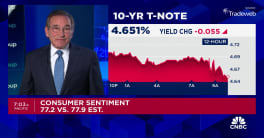Homeowners appear to be less than savvy shoppers when it comes to finding a mortgage to purchase or refinance their homes. A new study from Fannie Mae suggests that consumers could save money and find a more financially sustainable mortgage if they shopped more effectively.
Further, the study showed that higher income consumers were more likely to do more research and approach the search for a mortgage more efficiently. For example, lower income survey respondents were more likely than those with a higher income to have obtained a quote from only one lender and to make less use of technology in their mortgage due diligence.
The study, one in an ongoing series of Topic Analysis Reports produced by Fannie Mae, used data from the last three installments of its National Housing Survey. The survey is conducted monthly by phone with 1,000 homeowners and renters to assess their attitudes toward owning and renting a home, the current state of their household finances, views on the U.S. housing finance system, and overall confidence in the economy. The three monthly surveys that make up any given Topic Analysis Report are identical in wording and placement of questions. This Analysis report was written by Steven Deggendorf, Fannie Mae's Director of Business Strategy.
Deggendorf said his findings suggest that consumers could save money and find a more financially sustainable mortgage product if they shopped more effectively. Failing to do so means that consumers may not be taking full advantage of the unprecedentedly low interest rates offered today.
Income had a stronger correlation across responses than any other category including education, income, race, and whether the respondent was a first-time homebuyer. Deggendorf divided respondents into three income groups which we, for purposes of brevity, will label as Group A, incomes under $50,000; Group B, incomes between $50,000 and $100,000; and Group C, those with incomes over $100,000.
He found that 43 percent of Group A obtained mortgage quotes from only one source compared to 33 percent of Group C. Consumers from Group A and B however were much more likely (at 50 percent each) to meet with a lending representative face-to-face than were members of Group C who were slightly more likely than members of the other two groups to obtain quotes by phone. Less than 20 percent of any of the three groups relied on website sources for quotes.


The author points out that other recent research indicates that obtaining only one quote might cost borrowers $1,000 or more in closing costs and academic research suggests the risk of overpaying for a mortgage is higher among lower income borrowers.
Additional research suggests that borrowers with a better understanding of loan terms may take out lower-cost mortgages. However, research also suggests that many borrowers, particularly those falling in lower income brackets, do not fully understand their mortgages and can end up paying higher costs as a result.
Survey results show that consumers do not always thoroughly evaluate their mortgage options before obtaining a mortgage. Lower income respondents are more likely to be influenced by mortgage brokers and real estate agents. More than 3 out of 4 higher income respondents said that competitive offers would have a major influence on their choice, which is more than 20 percentage points higher than lower income respondents. Reputation is important to all income groups: more than 2 out of 3 said it would be a major factor in lender choice.
The study also found that a substantial portion of all consumers do not understand key mortgage elements. Respondents were asked to estimate the maximum percentage by which the monthly adjustable-rate mortgage (ARM) payment can increase over the life of the loan. Forty-one percent said they didn't know but among those who did offer a guess the average was about 10 percent where the answer was actually 50 percent or more.7 Current mortgage borrowers' average estimates were even further off of reality.

Respondents from Group C were more likely to rely on technology in their mortgage search. For example, in determining how much they could afford to spend on a home, 67 percent of Group A, 75 percent of Group B and 78 percent of Group C calculated the amount themselves. However, while 72 percent of those in Group a doing their own calculation did it in their head or on paper less than half of Group C did this, with about half using instead either a spreadsheet program or basic calculator or an online tool. High numbers of Group C borrowers used mobile devices to research homes for sale (74 percent) research mortgage lenders or track interest rates (68 percent each) while only around 50 percent of Group A borrowers used a mobile device for these purposes.
When asked about their own mortgage, higher income consumers were more likely to say they paid what they expected at their mortgage closing.

"Homeowners who don't obtain multiple mortgage offers or carefully compare rates are essentially leaving money on the table, particularly given today's unprecedentedly low interest rates," said Fannie Mae Chief Economist Doug Duncan. "Although a home purchase is the largest financial obligation most people will ever make, many borrowers do not fully understand their mortgage products and costs. As a result, some homeowners in this position may find themselves with unsustainable payments down the road."







